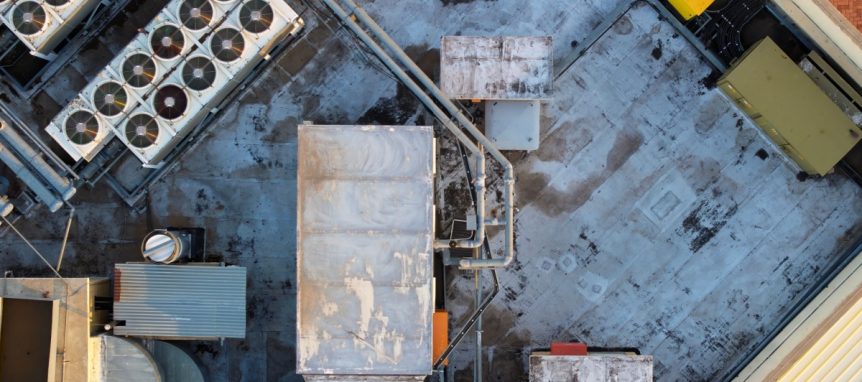For commercial and industrial facilities, annual maintenance plans are essential for preserving the health, safety, and efficiency of buildings and equipment. Yet, one critical issue often goes overlooked: rust. Corrosion may seem like a minor cosmetic problem at first glance, but if left unchecked, it can silently weaken infrastructure, compromise safety, and drive up operating costs. Making rust removal part of your annual maintenance plan is a proactive move that pays off in both the short and long term.
Rust forms when metal surfaces are exposed to moisture and oxygen, and this reaction is particularly aggressive in Florida’s high-humidity, salt-rich climate. The result is not just surface-level damage—corrosion can reach internal components of HVAC systems, support structures, and more. And because rust often begins in places that are not visible to the naked eye, problems can progress quietly for months before anyone notices.
The Hidden Threat of Rust
Rust is a byproduct of oxidation—a chemical reaction that occurs when metal is exposed to moisture and oxygen. In Florida’s high-humidity and salt-rich environment, this process happens more quickly and aggressively than in other regions. HVAC systems, metal supports, equipment housings, and even internal components are all vulnerable.
What makes rust especially dangerous is how easily it can form in hard-to-see areas: behind panels, inside ducts, beneath insulation, and in jointed metalwork. These hidden spots can harbor corrosion for months before visual signs appear, by which time the damage may already be severe.
The Cost of Reactive Maintenance
Many facilities wait until rust is clearly visible or causes a functional problem before addressing it. This reactive approach often leads to more expensive repairs, since advanced corrosion typically requires full part replacements or major interventions. It can also result in unplanned downtime, as equipment failure due to rust may halt operations unexpectedly and negatively impact productivity. Energy costs also rise, since rust reduces the efficiency of HVAC and mechanical systems, forcing them to consume more power. Lastly, advanced rust damage may cause your facility to fall short of safety codes and compliance regulations, which can lead to fines or legal issues. Waiting too long to address corrosion always leads to greater risks and higher costs.
Annual Inspections Make a Difference
Scheduling rust inspections annually—especially for HVAC systems, rooftops, mechanical rooms, and exposed infrastructure—helps identify early-stage corrosion that can be treated quickly and inexpensively. Professionals use tools to detect rust in hidden areas, evaluate moisture risks, and assess where protective coatings may need to be reapplied.
This regular monitoring ensures that small spots of corrosion don’t become major liabilities and that all rust-prone areas receive proper attention. In humid climates, bi-annual checks may be even more appropriate, particularly for systems that operate year-round.
Integrating Rust Prevention and Removal
Rust removal should never be a one-time event. When integrated into an annual maintenance plan, it pairs naturally with other scheduled tasks like HVAC cleaning, pressure washing, and building inspections. Once rust is removed, applying protective coatings or inhibitors helps prevent recurrence.
Services like those offered by RustyGone go beyond surface-level cleanup. Their process includes inspection, removal, and long-lasting protection using high-grade products suited to Florida’s challenging environment. They can also tailor maintenance schedules to a facility’s risk level and industry requirements.
Industries That Benefit Most
Annual rust maintenance is especially critical for hospitality and retail locations, where appearance, comfort, and HVAC performance directly impact customer satisfaction. Healthcare facilities benefit due to their need for dependable equipment and superior indoor air quality. Warehouses and industrial plants depend on structural integrity and properly functioning machinery to maintain operational standards. Coastal businesses and marinas, with near-constant exposure to salt air, must be especially vigilant to prevent ongoing corrosion.
No matter the sector, routine rust care helps maintain asset value, protect workers, and support operational consistency.
A Smarter Maintenance Strategy
Including rust removal in your annual maintenance plan is not just a preventive measure—it’s a smart investment. It extends the life of your equipment, reduces long-term costs, improves safety, and supports compliance. Florida’s climate demands proactive care, and rust is too costly to ignore.
To get expert help developing a tailored rust prevention strategy, contact RustyGone today. Their professional inspections and long-term solutions can help protect your investment year-round. With RustyGone on your side, your facility will be better equipped to handle the ongoing threat of corrosion—before it becomes a costly problem.

